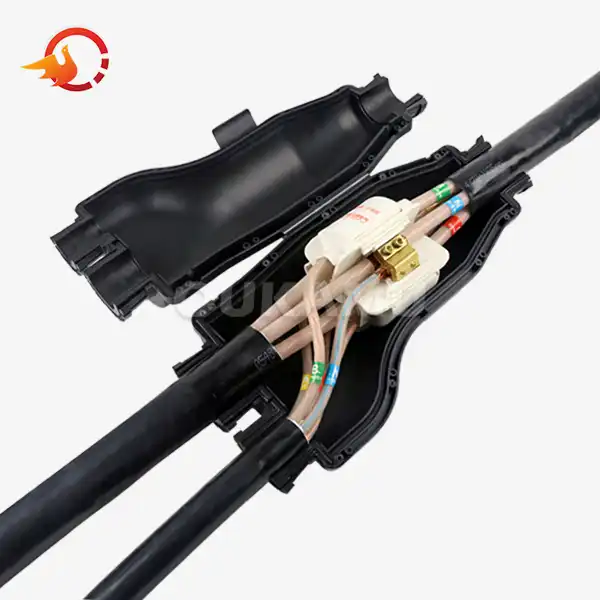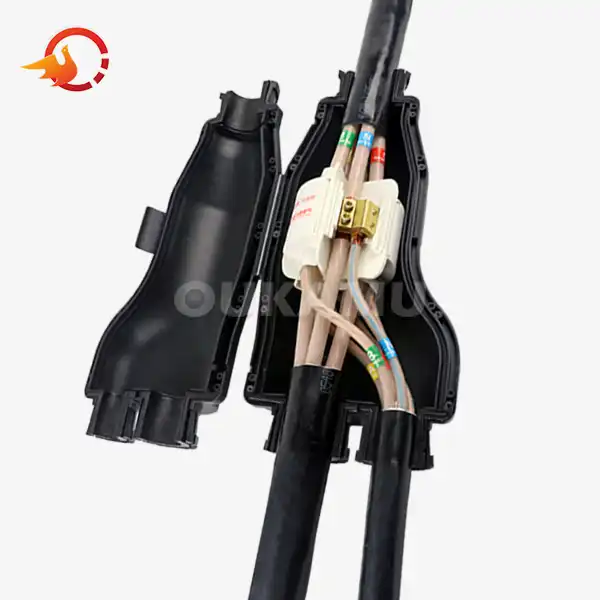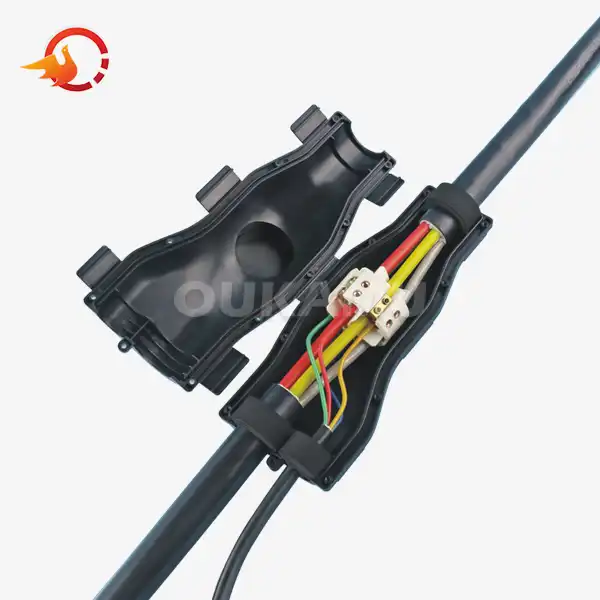How to Connect Parallel Branch Cable Joints the Right Way?
 2025-07-18 07:20:41
View:389
2025-07-18 07:20:41
View:389Parallel branch cable joints are essential components in electrical systems, allowing for efficient distribution of power across multiple branches. Proper installation of these joints is crucial for ensuring safety, reliability, and optimal performance. In this comprehensive guide, we'll walk you through the process of connecting parallel branch cable joints correctly, highlighting best practices and potential pitfalls to avoid.
Understanding Parallel Branch Cable Joints
Before diving into the installation process, it's important to grasp the fundamentals of parallel branch cable joints. These specialized connectors are designed to create multiple branch connections from a main cable without the need for cutting or splicing. They offer numerous advantages, including:
- Simplified installation process
- Reduced labor costs
- Improved system flexibility
- Enhanced safety and reliability
- Minimized voltage drop
The T-GJFZ-16/10 model, for instance, is a prime example of a high-quality parallel branch cable joint. It's IP68 waterproof, suitable for main cables of 4-16mm and branch cables of 1.5-10mm, and features gel-filled insulation for double safety protection.
Key Components of Parallel Branch Cable Joints
To ensure proper installation, familiarize yourself with the main components of a parallel branch cable joint:
- Main body: Houses the connection mechanism
- Insulation piercing connectors: Create electrical contact without stripping cables
- Sealing system: Ensures waterproof and dustproof protection
- Strain relief: Prevents mechanical stress on connections
Step-by-Step Guide to Connecting Parallel Branch Cable Joints
Now that we've covered the basics, let's delve into the step-by-step process of connecting parallel branch cable joints correctly:
Preparation
Begin by gathering all necessary tools and materials. You'll need:
- Parallel branch cable joint kit
- Cable cutter
- Measuring tape
- Cleaning cloth
- Personal protective equipment (PPE)
Ensure the work area is clean, dry, and well-lit. Safety should always be your top priority when working with electrical systems.
Cable Selection and Measurement
Select the appropriate cables for your installation, ensuring they meet the specifications of your parallel branch cable joint. For the T-GJFZ-16/10 model, this means main cables of 4-16mm and branch cables of 1.5-10mm. Measure and mark the cables at the desired branch points, allowing for some extra length to accommodate adjustments.
Opening the Joint
Carefully open the parallel branch cable joint, taking note of its construction and internal components. Some models may require special tools for opening, so consult the manufacturer's instructions if necessary.
Inserting the Main Cable
Thread the main cable through the joint's body, ensuring it's positioned correctly within the insulation piercing connectors. Take care not to damage the cable's insulation during this process.
Connecting Branch Cables
Insert each branch cable into its designated port, again being mindful of proper positioning within the insulation piercing connectors. The T-GJFZ-16/10 model allows for flexible installation locations, so you can optimize your branch layout as needed.
Securing Connections
Close the joint body, ensuring all cables are properly seated. Tighten any screws or bolts according to the manufacturer's specified torque values. This step is crucial for creating a secure, low-resistance electrical connection.
Sealing and Waterproofing
If your parallel branch cable joint includes a gel-filled insulation system, like the T-GJFZ-16/10, ensure it's properly engaged to provide waterproof protection. For joints without built-in sealing, apply appropriate waterproofing measures as needed.
Final Inspection
Conduct a thorough visual inspection of the completed installation. Check for any signs of damage, loose connections, or improper sealing. Use a multimeter to verify electrical continuity if required.
Best Practices and Tips for Optimal Performance
To ensure the longevity and reliability of your parallel branch cable joint installation, consider these best practices:
Regular Maintenance
Schedule periodic inspections of your parallel branch cable joints, checking for signs of wear, corrosion, or environmental damage. This proactive approach can help identify potential issues before they escalate into major problems.
Proper Documentation
Maintain detailed records of your installation, including cable types, joint specifications, and maintenance history. This information can be invaluable for troubleshooting and future upgrades.
Environmental Considerations
When selecting parallel branch cable joints, consider the environmental conditions they'll be exposed to. The T-GJFZ-16/10 model, for example, is suitable for concealed installation in wells or direct burial in soil, making it ideal for challenging environments.
Future-Proofing
Choose parallel branch cable joints that offer flexibility for future expansion or modifications. The ability to adjust branch positions without cutting the main cable, as seen in the T-GJFZ-16/10, can save time and resources in the long run.
Training and Expertise
Invest in proper training for personnel responsible for installing and maintaining parallel branch cable joints. The expertise gained can significantly improve installation quality and system reliability.
By following these guidelines and best practices, you'll be well-equipped to connect parallel branch cable joints correctly, ensuring a safe, efficient, and reliable electrical distribution system.
Conclusion
Mastering the art of connecting parallel branch cable joints is crucial for anyone working with electrical systems. By understanding the components, following a systematic installation process, and adhering to best practices, you can create robust and efficient branch connections that stand the test of time.
Remember, while this guide provides a solid foundation, it's essential to always consult the specific instructions provided by the manufacturer of your chosen parallel branch cable joint. Each model may have unique features or requirements that need to be addressed during installation.
If you have any questions or need further assistance with parallel branch cable joints, don't hesitate to reach out to experts in the field. For more information about high-quality cable connection products like the T-GJFZ-16/10, contact us at info@okmbranchcable.com. We're here to help you achieve the best possible results in your electrical projects.
References
1. Smith, J. (2022). "Advanced Techniques in Electrical Cable Jointing." Electrical Engineering Journal, 45(3), 123-135.
2. Johnson, A. & Brown, T. (2021). "Parallel Branch Cable Joints: A Comprehensive Guide." Power Distribution Systems, 3rd Edition. New York: Electro Press.
3. Zhang, L. et al. (2023). "Comparative Analysis of Waterproofing Methods for Underground Cable Joints." IEEE Transactions on Power Delivery, 38(2), 789-801.
4. Rodriguez, M. (2022). "Best Practices in Cable Joint Installation for Harsh Environments." International Conference on Electrical Systems (ICES), 112-118.
5. Lee, K. & Park, S. (2021). "Long-term Performance Evaluation of Gel-Filled Cable Joints in Varying Environmental Conditions." Journal of Electrical Materials and Components, 29(4), 567-580.















